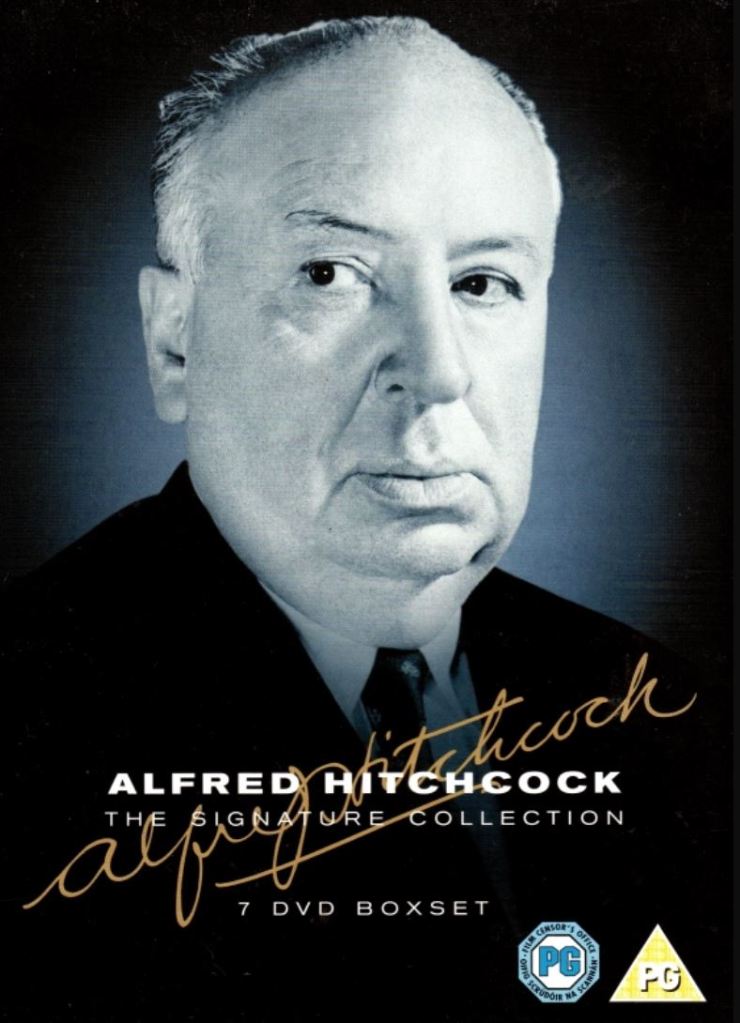I had to watch Rear Window a few times in college because I gave it a special focus in a term paper I wrote for my Hitchcock class, but haven’t seen it in the seven or eight years since; and while I can’t say that it’s really such a different movie from what I remember, can’t claim that I’ve accrued some kind of wisdom that lights up the story or characters in any way. But, having seen all these movies in chronological order, having gotten a good sense of director Alfred Hitchcock’s development as an artist and a brand, what Rear Window got me thinking about was Rope.
That one also stars Jimmy Stewart as the curmudgeonly hero, if not quite the protagonist, but Stewart’s illustrated with his westerns (from Destry Rides Again to Winchester 73 to Naked Spur) that he can play strikingly similar characters who are all remarkably different.
Same goes for his Hitchcock roles.
He plays a somewhat nihilistic and unremarkable philosophy professor in Rope and here, in Rear Window, he’s a photographer with an inquisitive journalistic sensibility but who’s held up with a broken leg.
And he…does a good job with the role. A fine job. Believable and sympathetic without being riveting.
Typical Hitchcock.
Rear Window’s one of those super-iconic movies that I feel I need to be super verbose or incisive about but, frankly, it looks to me now like it’s just a clever, pretty, well-made mystery story. I would probably never have guessed, if I’d seen it in theaters on opening night, that it would have held up so long as a classic; nor do I think anybody in its production would have guessed that. (Truffaut mighta.)
It’s not bad at all, it just doesn’t seem particularly remarkable now as I watch it in the same calender region of movies like Ikiru and Wages of Fear, The Bad and the Beautiful, From Here to Eternity. What stands out about Rear Window to my current sensibility is the painterly beauty of it and, by extension, the chilly calculation of it all.
In fact, looking back, I don’t see very much heart in Hitchcock’s work.
Back the beauty, though: the courtyard of this apartment complex in which Jimmy Stewart’s gaze is confined while his leg heals is reminiscent of the skyline backdrop in Rope, on which Hitchcock lavished a ton of attention.
Stewart’s character is spying on his neighbors out of boredom when he watches a certain marital dynamic in the opposite building progress into what appears to be murder.
It’s a great setup, simple as hell, and the fact that Hitchcock optioned it for an adaptation is triggering a thought I had about George Cukor with his remake of A Star is Born: is it that they each had a genius eye for the cinematic potential of a pre-existing story, or did they just stumble upon something that fit their personal touch really well? (Not that those things are mutually exclusive.)
Grace Kelly gives a solid performance but there’s a distracting meta component, watching this, about Hitchcock’s obsession with blondes, and how it progressed from his adoration of Kelly to his abuse of Tipi Hedren in both The Birds and then, worse yet, Marnie. In fact, I think that Rear Window’s legacy stands on (1) the brilliant simplicity of its premise, and (2) the conflated legacy/brand of Alfred Hitchcock and his relationship with one or the other lead.
Having been at the Project for almost three years now I think that some of the pupil’s deferential luster is falling from my eyes so that, rather than saying Hitchcock is a genius and then looking for the genius elements in each of his movies, I’m starting to wonder which of these movies would actually be on the List if not for how they serve—or are served by—his brand.
Cuz look at what we’ve seen from him so far
And we’ve got at least five more to go.
I really don’t think Lady Vanishes would be here but for the fact that Hitchcock made it, and the same probably goes for Notorious. My top three from that selection are Blackmail, Strangers on a Train, and Rope—only the first and third of which do I think would appear here without Hitchcock’s brand. (Another thing: consider how so many of the video releases of Hitchcock’s films just have a picture of him on the cover rather than any sort of promotional art.)
That brings us back to asking about the bases that our List here is trying to cover. Perhaps some movies are numbered here, among the Thousand, not because they’re all that special on their own but, rather, because they function as a chapter in a larger narrative. In this case, that larger narrative is about the development of one of cinema’s most formative practitioners—Hitchcock himself.
Anyway. The only new feature I wanna blow up for your consideration about Rear Window is the role of Stella, played by Thelma Ritter, who stole the entire picture in Pickup on South Street and here, with an even smaller role, comes close to doing the same thing again as Stewart’s no-bullshit physical therapist.












I disagree. I love Notorious and Rear Window.
LikeLike
Well they’re both really good and well-made, I just wonder if theyd have the same cultural cache if theyd been made by somebody else. Do you have a favorite Hitchcock movie?
LikeLike